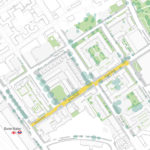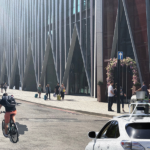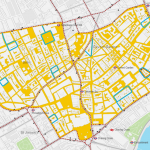At Momentum we are always excited by the ways that new technologies can enhance transport systems through improving operational efficiencies, user experience, and data analysis, or preferably all three! In this article we give you a taste of what the world of transport will look like in the months and years to come, and the key barriers preventing the wider application of these technologies.
For the most part, new transport technologies are not quite so new as their proponents would like to make out; they may involve innovation in the technical delivery of the technology, or it may involve improved systems integration to provide new services. Whatever the case, new technologies must serve, rather than dictate, our transport needs, offering new and improved means of achieving the same ends that transport has always served.
Journey Planning
Journey planning is already a hugely powerful tool which is bespoke to each individual’s routing decisions, and available in ‘real-time’ and for future route planning. The more interesting development, though, has been the use of the vast data stores collected by companies offering journey planning services. Citymapper, for example, is providing more and more transport services directly. Using the wealth of demand data at its disposal, it is finding gaps in supply in the current public transport provision.
Expect private transport provision intermingling with public transport in new multi-modal combinations.
CAVs
Perhaps the most eagerly anticipated and feared in equal measure, connected and autonomous vehicles (CAVs) seem inevitable in some shape or form in the next five years. The key fault lines in the provision of CAVs are their tenure, and their design provision for pedestrians and cyclists. Private CAV ownership may well increase congestion as simpler-to-operate vehicles could encourage the use of CAVs instead of public transport. A fleet of CAV vehicles, though, could reduce the generation of further congestion, as the total provision would be limited. A fleet-style operation, where people can rent a CAV, thus moving away from private vehicle ownership, would limit vehicle numbers whilst offering access to CAV technology.
The issue of pedestrian and cyclist interaction with CAVs is of great public concern, and reasonably so. The debate is reminiscent of the ‘trolley problem’ thought experiment in moral philosophy, asking whether you would pull the lever for a tram heading towards five people, diverting it to a different set of tracks with one person on them. The ‘decision’ that CAVs are programmed to make between the safety of its passengers and that of other road users will determine the public acceptance of CAV technology. In terms of efficiency, an over-prioritisation of the pedestrian will result in gridlock for CAVs that venture into busy areas. This may, in the long run, not be such a bad thing. Connected and autonomous vehicles are, after all, still large metal boxes which makes them the least space-efficient road user group.
Seasonal changes
We at Momentum are placing bets on the scale of uplift in dockless bikes being left around our office near Farringdon station as the summer months (or weeks…) approach – we’re a fun office like that! How increased numbers of parked dockless bikes affect street clutter as their numbers increase with the temperature will be a good barometer of the success that dockless bikes have with regulatory authorities in London and beyond.
In a similar vein, the rise of electric scooters will raise regulatory questions about where they can legally be used – the pavement or the carriageway. Review of this will open a host of more difficult questions about road space prioritisation.
The future of transport could be a bright one, with a better-informed public using more efficient and less congested transport services, and flexible transport options facilitating multi-modal transport with ease.
To read more articles like this, click here to read the previous Spring edition of Connect.







